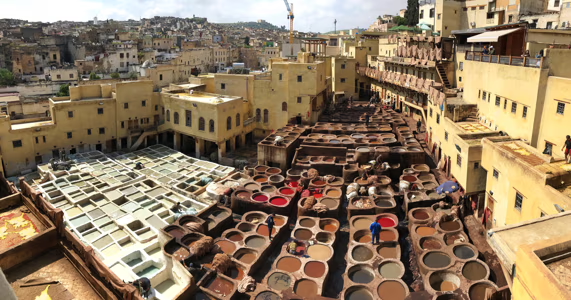unitedfnafans.org – Morocco, a country rich in history and culture, is home to some of the world’s most ancient and enduring crafts. Among these, the Moroccan tannery stands out as a testament to human ingenuity and artistry. These tanneries, particularly the famed Chouara Tannery in Fez, are not just industrial sites but living museums that showcase a centuries-old process of leather production. The scent of these tanneries, a blend of pungent chemicals and natural materials, is as much a part of the Moroccan experience as the vibrant colors and textures of the leather produced.
The Art of Tanning in Morocco
The art of tanning in Morocco is deeply rooted in tradition. The process begins with the preparation of animal hides, which are soaked in a series of limestone pits to remove hair and flesh. This is followed by the washing and dyeing stages, where the hides are dipped into vats containing a mixture of natural dyes and pigments. The use of natural materials, such as poppy for red, indigo for blue, and henna for orange, gives the leather its distinctive and rich colors.
The Scent of Industry
The scent of a Moroccan tannery is as complex as the process itself. It is a blend of natural and chemical odors, each contributing to the transformation of raw hides into supple leather. The initial stages emit a strong, earthy smell, which gradually gives way to the sharp, tangy scent of the dyeing process. The use of pigeon poop and cow urine in the early stages of the tanning process, believed to be effective in removing hair and softening the hides, adds to the unique olfactory experience.
The Artistry of Craftsmanship
Despite the industrial nature of the process, the Moroccan tannery is very much a place of artistry. The skill of the craftsmen, who have often learned the trade from their fathers and grandfathers, is evident in every step of the process. From the careful selection of hides to the intricate dyeing and finishing techniques, the production of Moroccan leather is a labor of love. The result is a product that is not only beautiful but also durable and unique.
The Role of Tanneries in Moroccan Culture
Tanneries like the Chouara in Fez are more than just industrial sites; they are cultural landmarks that attract visitors from all over the world. They offer a glimpse into a way of life that has remained largely unchanged for centuries. The leather produced in these tanneries is used in a variety of traditional Moroccan crafts, from the iconic Babouche slippers to luxurious leather bags and poufs.
Conclusion
The Moroccan tannery is a place where industry meets artistry, where the ancient and the modern coexist in harmony. The scent of these tanneries, as distinctive as the leather they produce, is a reminder of the enduring legacy of Moroccan craftsmanship. As visitors walk through the labyrinthine alleys of the tannery, inhaling the complex aromas and watching the craftsmen at work, they are not just witnessing a process; they are experiencing a piece of Moroccan history and culture. The Moroccan tannery is a testament to the beauty and resilience of traditional crafts, a scent of industry and artistry that continues to captivate and inspire.
